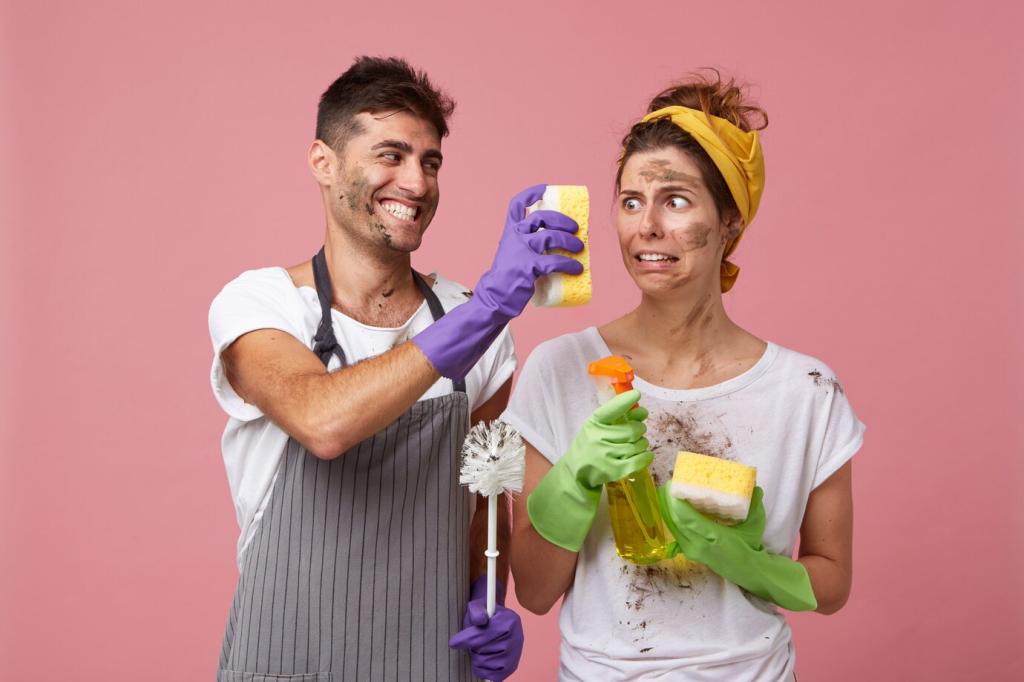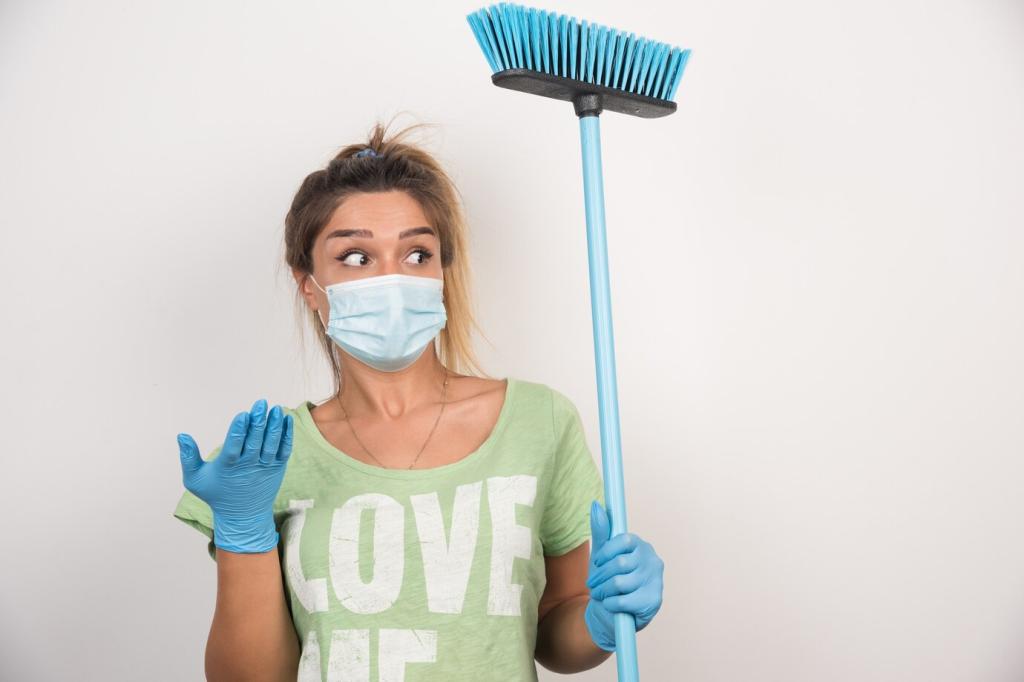Welcome to your new home! Embarking on the journey of keeping your living space clean and healthy is an important milestone. This guide is tailored to newcomers eager to embrace eco-friendly cleaning habits. By choosing environmentally conscious methods and products from the start, you safeguard both your home’s atmosphere and the planet. The following sections offer practical advice, easy-to-implement strategies, and valuable insights, empowering you to maintain a sparkling clean home with minimal environmental impact.
Understanding the Basics of Eco-Friendly Cleaning
The Importance of Safe Ingredients
The ingredients in your cleaning products can directly affect both your well-being and the environment. Common store-bought cleaners often include volatile organic compounds (VOCs), ammonia, and bleach, which may irritate respiratory systems and contribute to indoor air pollution. Opting for products with simple, plant-based components reduces these risks significantly. Begin by reading product labels thoroughly and research unfamiliar ingredients. Seek out certifications for green cleaning and stay informed, since some products labeled “eco-friendly” may not live up to the promise. Keeping ingredient lists short and recognizable is a reliable way to promote safety.
How Eco-Friendly Cleaning Helps the Environment
Eco-friendly cleaning goes beyond your home; it makes a difference to the world outside. Chemicals found in traditional cleaning products often end up in waterways, affecting aquatic life and contaminating drinking water supplies. Choosing biodegradable, non-toxic products ensures that what goes down your drain doesn’t persist in the ecosystem. Additionally, green cleaning methods usually require less packaging, reducing plastic waste. By adopting these choices now, you contribute to a larger movement that promotes sustainable living and a cleaner planet for everyone.
Health Benefits for Home Dwellers
Many people experience allergic reactions or sensitivities triggered by cleaning agents. Fragrances, dyes, and synthetic chemicals are common culprits. Eco-friendly products tend to be gentler, making them ideal for households with children, pets, or those prone to allergies. Improved air quality is a benefit often noticed soon after making the switch. In a new home, starting with a healthy baseline helps you avoid compounding any existing issues. This healthier approach ensures that your daily cleaning routines support long-term wellness for every resident.
Essential Eco-Friendly Cleaning Products to Start With
Vinegar stands out as a cleaning powerhouse due to its natural acidity and affordability. It effectively tackles grime, mineral deposits, and odors on a variety of surfaces, including glass, countertops, and tiles. While pungent initially, the scent dissipates quickly, leaving surfaces fresh. Vinegar can be diluted with water for general cleaning or mixed with baking soda for tackling tough stains. It’s important to note that vinegar should not be used on natural stone surfaces, as the acid can cause damage; always check suitability before use. By relying on solutions like vinegar, you minimize reliance on industrial chemicals while achieving excellent results.
Baking soda is a gentle yet powerful abrasive, ideal for scrubbing sinks, stovetops, and bathroom surfaces. Unlike harsh scouring pads or powdered cleaners, baking soda won’t scratch most materials but effectively removes residue and odors. A sprinkle atop a damp sponge can handle soap scum, grease, or even the inside of your oven. Baking soda’s deodorizing properties also make it useful for eliminating funky smells from refrigerators, shoes, or carpets. Keeping a box on hand ensures you can tackle a wide range of cleaning tasks with one safe, natural ingredient.
The products you use for washing dishes and clothes touch both your skin and wastewater systems, so it’s crucial to select gentle, biodegradable options. Look for soaps made from renewable resources such as coconut or olive oil, free from phosphates, chlorine, and synthetic fragrances. These plant-based alternatives clean effectively without releasing toxins into greywater or leaving residue on fabrics and dishes. Many brands now offer concentrated formulas, further minimizing waste and packaging. By starting with these staple products, you create a safer, greener home environment from day one.

Previous
Next
Cleaning Techniques that Save Resources
Water is an essential resource, often overused in traditional cleaning routines. Eco-friendly cleaning means using only as much water as you truly need. Consider filling a bucket instead of running water constantly when mopping floors or rinsing surfaces. For lightly soiled areas, a damp cloth is often sufficient, and microfiber towels can clean effectively with just water. If you must use running water, be conscious of the flow and turn it off between tasks. Not only does this conserve water, but it also lowers your utility bill, helping your eco-friendly intentions align with practical savings.
Eco Solutions for Kitchens
The kitchen is the heart of any home, but it’s also a hotspot for grease, stains, and bacteria. Green cleaning in the kitchen means favoring biodegradable dish soaps and natural disinfectants like lemon juice and vinegar. Wooden and silicone tools are preferable to plastic, being easier to sanitize and more durable. Post-cooking cleanup benefits from microfiber cloths, which trap crumbs, oil, and even bacteria with minimal need for chemical agents. Adopting a “clean as you go” habit streamlines maintenance, keeps surfaces hygienic, and cuts down the urge for harsh, last-resort cleaners.
Sustainable Bathroom Practices
Bathrooms typically demand frequent attention, with hard water deposits and soap scum being routine challenges. Baking soda paste lifts grime from tiles, while vinegar spray can shine glass and mirrors. For toilets, opt for plant-based cleaners or use a mix of baking soda and citric acid to deodorize without synthetic fragrances. Keep in mind that proper ventilation helps reduce mold growth, allowing you to clean less often and with gentler agents. With a few eco-friendly staples and a regular schedule, your bathroom remains fresh and chemical-free.
Living Spaces the Eco Way
Living rooms and bedrooms are where comfort meets frequent contact with upholstery, electronics, and flooring. Dust attracts pollutants, so microfiber dusters and cloths are your first line of defense, capturing particles without the need for sprays. Rugs can be refreshed with baking soda and occasional sunlight exposure, cutting back on energy-intensive shampooing or synthetic fragrances. For touchpoints like doorknobs or remotes, a wipe-down with diluted, plant-based soap is effective and safe for all occupants. This gentle approach not only lengthens the life of your furnishings but also keeps your home’s air clear and healthy.
DIY Solutions for Everyday Cleaning
Crafting an all-purpose cleaner at home is simpler than it seems. A mix of equal parts white vinegar and water, with a few drops of essential oil for scent, can clean most hard surfaces. For extra cleaning power, add a tablespoon of baking soda before use. Always shake before spraying to recombine the ingredients. This concoction is effective on counters, stovetops, and appliances, though always avoid use on surfaces sensitive to acids, like natural stone. By making your own, you bypass the plastic, fillers, and questionable ingredients of many commercial products.
Previous
Next
Cutting Down on Waste During Cleaning
Before buying new cleaning cloths, consider what you already have. Old T-shirts, socks, and towels can find new life as sturdy cleaning rags, reducing landfill waste and saving money. Cut textiles into appropriately sized pieces, hem if desired, and designate them for different cleaning areas. After use, simply wash and reuse. This zero-waste approach diverts fabric from trash and minimizes the need for new purchases, without compromising cleaning effectiveness. It’s a practical, personal step toward sustainable home management.
Single-use packaging is a significant contributor to household waste, but buying in bulk or utilizing local refill stations can make a major difference. Many eco-friendly cleaning brands offer large-format containers or encourage customers to bring their own reusable bottles for refills. This practice drastically reduces plastic consumption and often proves more cost-effective in the long run. When you move into your new home, establish a system for storage and refilling. These efforts lower your household’s ecological footprint while supporting sustainable commerce.
After certain types of eco-friendly cleaning, like fruit-and-herb infusions or the use of paper-based materials, composting provides a responsible disposal method. Even the baking soda and vinegar remnants from DIY cleaning projects can be safely added to a compost pile, provided they’re combined with appropriate organics and used in moderation. If your municipality offers composting services, familiarize yourself with guidelines and start setting aside suitable waste. By diverting organics from landfills, you contribute to nutrient-rich soil production and close the sustainability loop in your own home.

Kitchen mishaps and household projects often result in grease stains, which can be stubborn without the right approach. Begin by blotting up as much excess oil as possible using an old cloth or paper towel. Sprinkle baking soda or cornstarch onto the affected area and let it sit to absorb residue. After half an hour, brush or vacuum away the powder and wash as usual with a plant-based detergent. For stubborn cases, a dab of dish soap mixed with warm water can lift lingering grease from counters, floors, or even clothing. This gentle, non-toxic method is a healthy alternative to solvent-laden spot removers.

Spilled wine or fruit juice can cause panic, but prompt eco-friendly action limits lasting marks. Immediately blot the stain rather than rubbing, then sprinkle salt or baking soda on the area to help absorb the liquid. After a few minutes, flush with cold water and treat with a mixture of water and vinegar, letting it sit before laundering or scrubbing. Natural fibers usually respond well to this approach, but always spot test beforehand. This strategy avoids the bleach and synthetic alternatives commonly used for stain lifting, protecting both fabrics and household health.

For homes with pets, cleaning accidents effectively without toxic sprays is essential for everyone’s safety. Blot liquid messes with reusable cloths, then apply a baking soda paste to absorb odors and stains. Allow it to dry, then vacuum thoroughly. For both floors and carpets, a solution of vinegar and water will neutralize lingering smells without introducing harmful chemicals. Ensuring the area remains dry and well-ventilated afterward prevents mold growth. By sticking to these green methods, you care for both your pets and the broader household environment.
